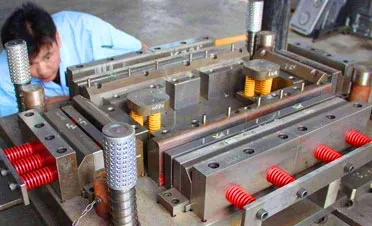Understanding Die Casting Components and Their Applications in Manufacturing Processes
Die Casting Parts A Comprehensive Overview
Die casting is a popular manufacturing process that allows for the production of complex metal parts with high precision and outstanding surface finish. This technique is widely utilized across various industries, including automotive, aerospace, and consumer electronics. The effectiveness of die casting can be attributed to its ability to produce parts that are not only dimensionally accurate but also strong and lightweight. In this article, we will explore the fundamentals of die casting, its benefits, applications, and the types of materials used in the process.
What is Die Casting?
Die casting is a metal casting process characterized by forcing molten metal under high pressure into a mold cavity. The molds, known as dies, are typically made of hardened steel and can be reused multiple times, which makes this process suitable for mass production. The key stages of die casting include melting the metal, injecting it into the die, cooling, and then ejection. Once the metal solidifies, the die opens, and the finished part is removed.
Types of Die Casting
There are two primary types of die casting processes hot chamber and cold chamber.
1. Hot Chamber Die Casting This process involves the injection of molten metal directly from a furnace into the chamber. It is primarily used for metals with low melting points, such as zinc and magnesium. Hot chamber die casting is known for its speed and efficiency, allowing for high production rates.
2. Cold Chamber Die Casting In this method, the molten metal is poured into the die from a separate furnace, as the chamber cannot be submerged in molten metal due to the higher melting points of materials like aluminum. Cold chamber die casting is typically employed for aluminum, brass, and other metals with higher melting temperatures.
Advantages of Die Casting
The advantages of die casting are numerous
- Precision Die casting produces parts with tight tolerances, often within ±0.005 inches, making it ideal for applications requiring precise dimensions.
- Surface Finish The method generates smooth surfaces that often require little to no finishing processes, reducing overall costs and production time.
- Complex Shapes The ability to create intricate shapes and geometries makes die casting suitable for various design needs, from simple components to more complex structures.
die casting parts

- Material Efficiency Die casting minimizes waste by utilizing metal efficiently, allowing for the reuse of scrap material during production
.- Rapid Production Once the dies are created, the process allows for quick production runs, enabling manufacturers to meet market demands swiftly.
Applications of Die Casting Parts
Die casting parts are prevalent in numerous industries, showcasing their versatility and adaptability
- Automotive Industry Components such as engine blocks, transmission housings, and various brackets are made using die casting due to the durability and weight-saving benefits.
- Aerospace Critical parts requiring strength and precision, like housing for control systems and components for aircraft engines, often utilize die casting methods.
- Consumer Electronics Enclosures for devices such as laptops, smartphones, and appliances rely on die casting for both functionality and aesthetics.
Materials Used in Die Casting
The choice of materials for die casting largely depends on the application requirements. Commonly used metals include
- Aluminum Known for its lightweight and corrosion-resistant properties, aluminum is frequently used in automotive and electronics applications.
- Zinc With excellent casting characteristics, zinc die casting is ideal for parts requiring a good finish and durability at a lower cost.
- Magnesium Known for its strength-to-weight ratio, magnesium is gaining popularity in the aerospace and automotive industries.
In conclusion, die casting is a vital manufacturing process that facilitates the production of high-quality parts across various sectors. With its ability to deliver precision, efficiency, and versatility, die casting continues to play an essential role in meeting the demands of modern manufacturing. As technology advances and new materials emerge, the potential applications and benefits of die casting will only expand, cementing its place in the future of industrial production.
-
OEM Sand Cast Pump Valve Fittings - Baoding Hairun Machinery And Equipment Trading Co., Ltd.NewsAug.01,2025
-
Custom OEM Impellers | High Efficiency & PrecisionNewsAug.01,2025
-
OEM Sand Cast Pump Valve Fittings - Baoding Hairun Machinery | Customization, Quality AssuranceNewsAug.01,2025
-
OEM Sand Cast Pump Valve Fittings - Baoding Hairun Machinery And Equipment Trading Co., Ltd.NewsAug.01,2025
-
OEM Sand Cast Pump Valve Fittings - Baoding Hairun Machinery And Equipment Trading Co., Ltd.NewsJul.31,2025
-
OEM Sand Cast Pump Valve Fittings - Baoding Hairun | Precision Engineering, CustomizableNewsJul.30,2025















